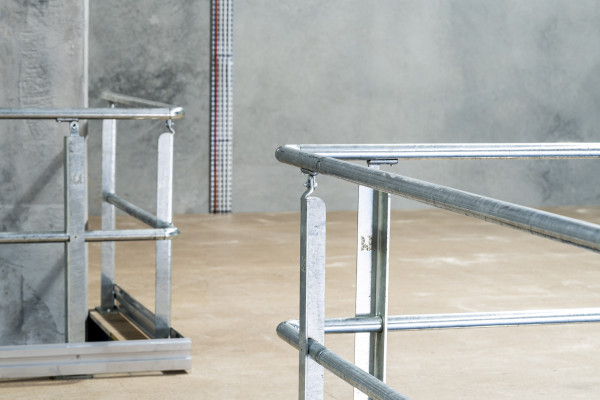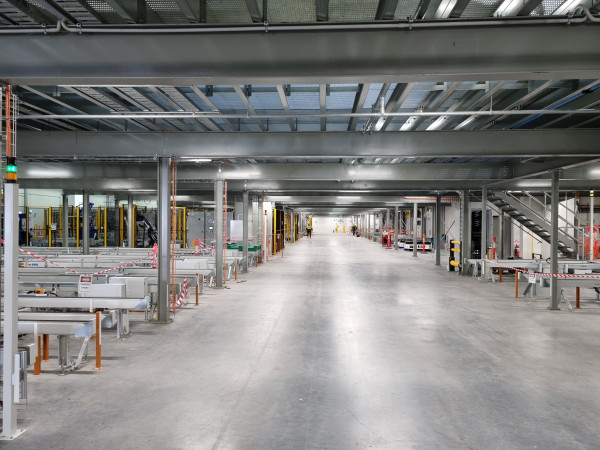How often should a mezzanine floor be inspected? And how thoroughly? These are some questions that may pop up in your mind. In commercial and industrial settings, mezzanine floors fall into the category of workplace equipment, which means they require a solid commitment to safety, aligning with Australian workplace health and safety standards. But it is never about simply ticking boxes for compliance; there is a deep-seated responsibility for employers to look out for their team's wellbeing.
Making sure your mezzanine floor system is regularly checked is key to maintaining safety and ensuring they last, similar to the yearly inspections advised for fire safety equipment. In this blog post, we are unpacking a safety checklist for mezzanine floor inspections, helping you keep everything up to scratch and in line with the necessary standards and regulations.

Understanding the Importance of Regular Mezzanine Floor Inspections
For those in need of a refresher — mezzanine floor solutions are intermediate levels situated between a building's primary floors that greatly enhance warehouse space optimisation. While they are super handy, it is crucial to keep an eye on their safety and stability.
Routine inspections by certified professionals can uncover potential hazards that might otherwise remain hidden. Even minor issues, if not addressed timely, can escalate, compromising the structure's safety. Prompt identification and correction of such defects are vital in preventing accidents that could have severe implications for individuals and the business at large.
Mezzanine Floor Inspection: What to Expect
A mezzanine floor inspection should be conducted at least annually by certified safety professionals to ensure compliance with health and safety standards. These thorough, on-site assessments examine structural integrity, load capacity, safety features and emergency access, identifying any potential risks or wear and tear that could compromise safety.
Of course, annual checks are the bare minimum — regular, expert-led inspections are crucial for maintaining a secure workplace and preventing accidents.
Common Safety Hazards Identified During Inspections
When it comes to inspecting mezzanine floors, it is not a quick once-over. The devil is often in the details, and several common safety hazards can emerge if not caught in time. Here's what to keep an eye out for:
-
Detached handrails and edge protection: Loose or detached handrails pose significant fall risks and must be secured immediately.
-
Compromised fire safety features: A chink in the armour of fire-rated components can turn a minor incident into a disaster. Immediate repair is essential to maintain fire resistance.
-
Flooring damage: A trip or stumble on uneven flooring might seem small, but it is a risk that needs fixing, stat.
-
Structural integrity: The backbone of your mezzanine floor, like dislodged steel columns, must be in tip-top shape to avoid a domino effect on the structure's stability.
-
Weight overloading: Mezzanine floors have their limits. Exceeding the recommended load can lead to structural fatigue or failure, so keep an eye on weight distribution.
-
Obstructed access points: Blocked or cluttered stairways and access points not only violate safety codes but also can turn a routine evacuation into chaos during emergencies. Regular checks to keep these areas clear are crucial.
Key Aspects Influencing Mezzanine Floor Safety
If we are talking about mezzanine floor safety, it is important to consider a variety of factors that can affect its stability and security. From how you use the space to the age of the structure, every element plays a part in maintaining a safe environment. Here are some key aspects that influence mezzanine floor safety:
-
Type of usage: The risk profile varies significantly between storage and office mezzanines, with the former more susceptible to damage from heavy loads and machinery.
-
Age: Older mezzanine floors may present more safety challenges due to prolonged exposure to various stressors.
-
Operating environment: Floors in high-traffic areas, especially those with frequent equipment movement, face higher risks of structural impacts.
-
Pre-owned floors: Second-hand mezzanine floors may not align perfectly with new operational requirements, highlighting the importance of thorough pre-purchase inspections.

Enhancing Mezzanine Floor Safety: Proactive Measures
Keeping your mezzanine floor safe involves a combination of following regulations and taking proactive measures that ensure the well-being of everyone involved. From the structure itself to the environment it is in, every aspect needs attention. Here are some effective strategies to boost mezzanine floor safety:
-
Column guards: Installing protective guards can shield structural columns from accidental impacts.
-
Load management: Adhering to specified weight limits prevents overloading and potential structural failure. This is a stronger consideration with a factory mezzanine floor.
-
Safe access: Ensuring staircases and access points comply with building codes promotes safe and efficient movement.
-
Fire safety: Adequate fire protection measures, including fire-rated materials and emergency signage, are crucial for safety.
-
Environmental controls: Proper lighting, heating and ventilation contribute to a safer and more comfortable working environment.
-
Conducting effective in-house safety checks: Empowering staff with basic inspection training enables early detection of potential hazards, enhancing overall safety. Maintaining a spic-and-span mezzanine floor further reduces accident risk!
Your Personal Commitment to Safety and Compliance
Ensuring the structural integrity and safety of mezzanine floors is not only a regulatory requirement but a moral imperative for employers. Regular professional inspections, coupled with vigilant in-house safety practices, form the cornerstone of a safe and productive workplace.
Adherence to Australian building codes and regulations underpins every aspect of mezzanine floor design, installation and maintenance, guaranteeing a safe environment for all users.
Turn to Unistor for Expert Guidance
For facility managers and warehouse operators, ensuring the safety of your mezzanine installations is a top priority. We encourage you to integrate our comprehensive checklist into your routine safety audits, tailoring it to meet the unique needs of your setup.
To stay at the forefront of safety standards and best practices, reaching out to Unistor can make all the difference. With over thirty years of industry experience, our team of experts is on hand to provide tailored advice, assist with mezzanine floor inspections and address any concerns you may have about the structural integrity or safety features of your mezzanine floors. Do not leave safety to chance—contact Unistor today for professional guidance and support.
Does your mezzanine system meet the highest standards of structural integrity and safety? Contact Unistor now for all of your mezzanine needs and take a proactive step towards safeguarding your workplace.

